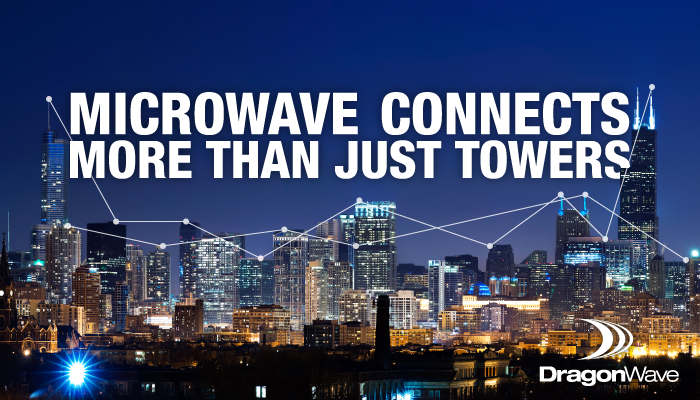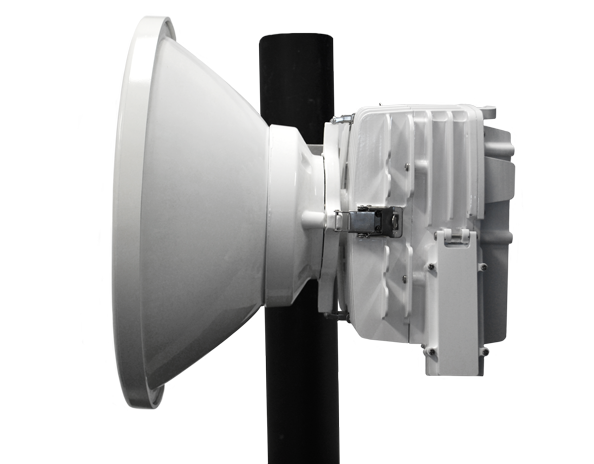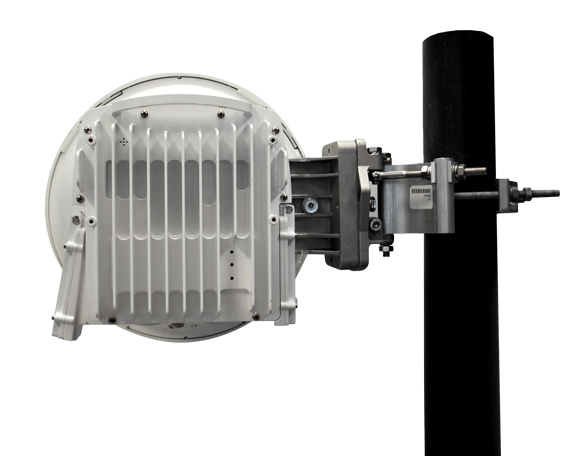Microwave Connects More Than Just Towers

On the surface of it, it may appear that fixed and mobile broadband connectivity are ubiquitous, especially in developed markets like the United States. Yet appearances can be deceiving.
In fact, many enterprises are still unable to get adequate broadband connectivity, while bandwidth demand continues to soar because more services are getting migrated into “the cloud”, boosting traffic. In the United States, less than 50% of buildings with 20 or more employees have fiber connectivity, as per the 2016 VSG Report. There are over 500,000 commercial buildings without fiber access in the United States alone. Fiber connectivity is increasing by fewer than 3 per cent per year. Consequently, it may take more than a decade before all of these buildings are connected to fiber at the current pace of deployment.
In the meantime, microwave radio systems have been evolving rapidly, delivering gigabit and multi-gigabit speeds from a single system. Their capabilities and dependability are well appreciated by mobile operators, as they account for 60-70% of mobile site connectivity outside of North America.


Figure 1: DragonWave’s all-outdoor Harmony Enhanced Multi Carrier delivers up to 1 – 3 Gbps per link (uncompressed) with dual-carrier configuration. This system can operate at full speed on links spanning less than a mile up to tens of miles – depending on the selected frequency band, antenna size, rain zone and link availability target.
Looking at the FCC ULS , we can glean some interesting insights into United States microwave radio deployments. In 2016, less than 25% of total microwave links were deployed for broadband business connectivity. None of the top 10 fiber providers deployed more than 30 links.
There are numerous benefits in using microwave for business connectivity. Those include rapid deployment (no trenching, right of way), access potential to virtually every building and up to 99.999% service availability.
Due to the advantages of wireless backhaul, several specialised operators focus on delivering high speed wireless connections to businesses and it is this group that have deployed the majority of the non-mobile carrier links in 2016. In the past, the concern with microwave had been around scalability. However, with microwave systems now delivering gigabit and multi-gigabit capacities, it is worth a second consideration, especially in locales where fiber is not readily available.
Microwave radio is an excellent and proven solution for complementing and accelerating Fiber to the Building (FTTB) / Fiber to the Premise (FTTP) deployments. It can quickly extend the reach of fiber and rapidly illuminate “black spots” on your gigabit connectivity map at a modest expense.

Bernard-
Your article is spot on. Fully agree there's many buildings in the US that don't have fiber, and in many cases, our customers say fiber simply isn't available.
From both a time to deploy and value perspective, high-capacity wireless is the ideal solution for most off-fiber locations.
My company has been installing 10 Gbps Full Duplex radios with great success. GigE+ bandwidth is a must in today's environment. My company is already getting requests for our new 2+0 configuration offering 20 Gbps Full Duplex.
Derek B